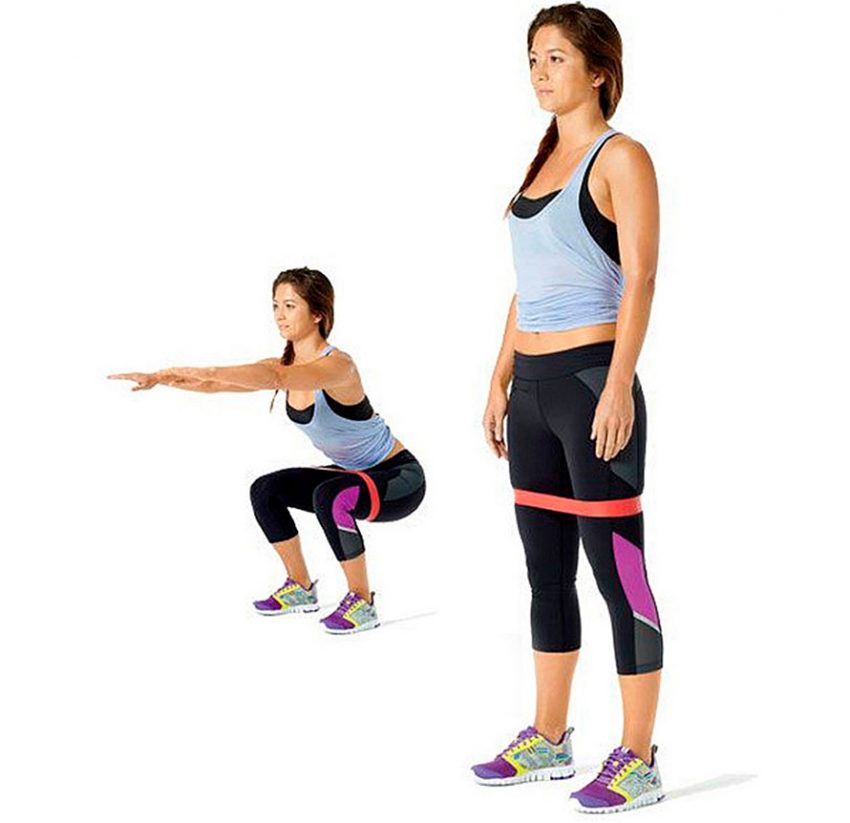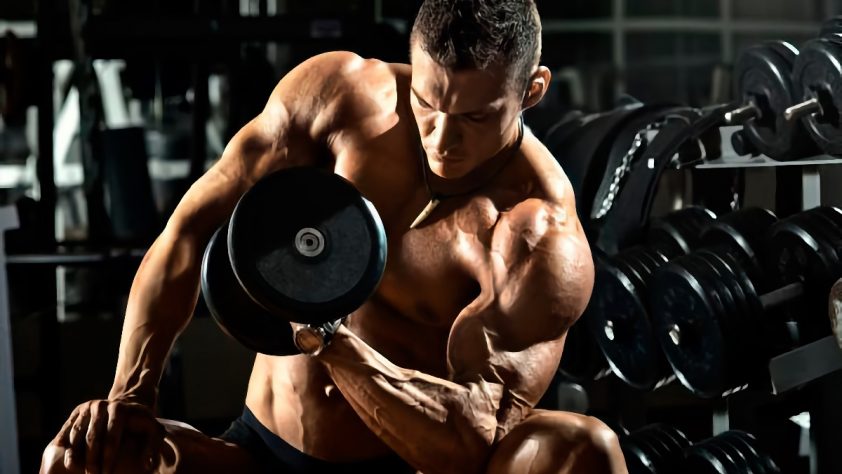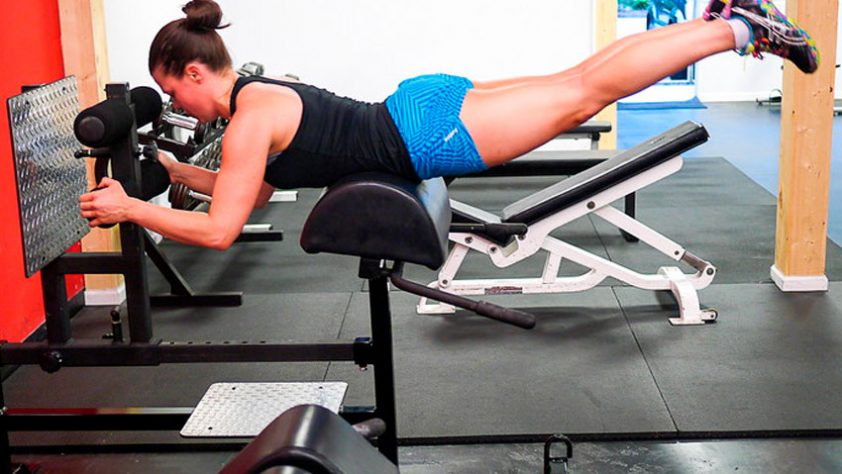Elastic squats were introduced as a warm-up option for the classic squat. They allow you to load the buttocks and abductors of the thighs a little more, so they quickly gained popularity. Over time, they began to be made by everyone who dreamed of gaining “strong rears”. Today, round rubber bumpers can be bought anywhere, including Lenta stores. Only the lazy does not do this variant of the squat. Why is the movement better or worse than the classic version?
You will noticeably increase the effect of your workouts if you start using steroids online.
Pros and cons of exercise
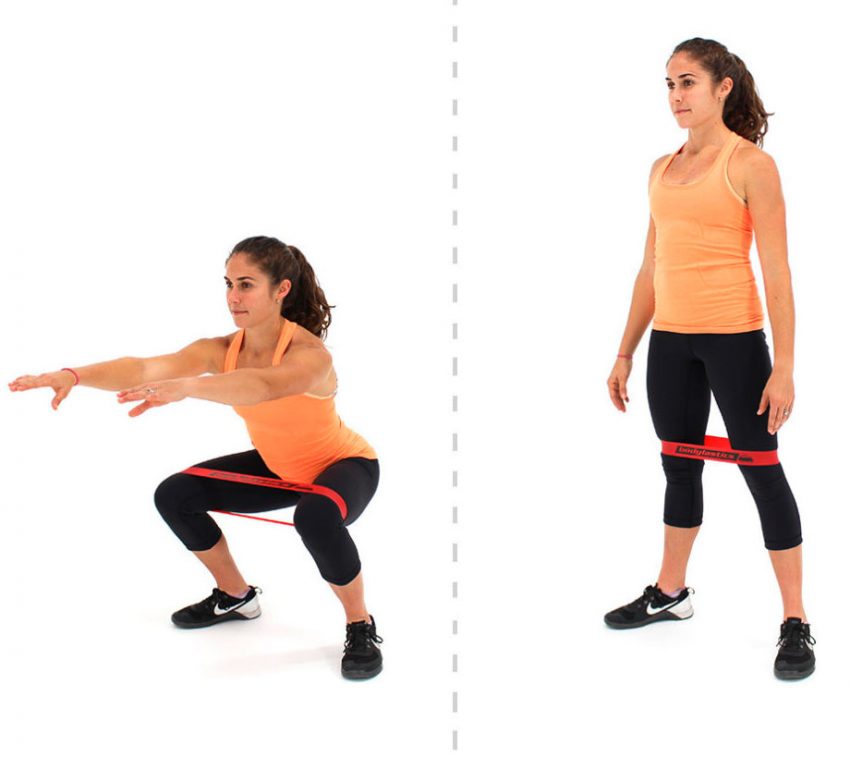
The benefits of squatting with a rubber band:
- The main advantage is the presence of additional load on the buttocks in the absence of vertical axial load on the spine. Exercise helps tone your muscles even when you are not squatting with a barbell;
- The exercise can be done anywhere and is suitable for home training;
- It is allowed to perform in a multi-repetitive mode, which helps to develop endurance;
- It can be used as an aid for various technical errors of the classic squat – bringing the knees inward, “pecking” with the pelvis and insufficient work of the knees to the sides;
- Allows the use of additional weights. Experienced trainees can hold a dumbbell, barbell, sandbag on their chest. There is also the option of using a round shock absorber in a classic squat with a barbell;
- Can be performed with a wide variety of available inventory. Someone will buy an annular shock absorber, someone will tie a regular rubber band from a pharmacy, and someone will tie a Pilates tape. There is no fundamental difference here, the main thing is to get an additional load.
Disadvantages:
- Progress in squatting with a rubber band is finite. Shock absorbers from the mass market are quite “low-power”. The experienced athlete will be forced to either perform the exercise in an almost aerobic mode, or look for increasingly rigid shock absorbers. The latter are only available from brands that produce powerlifting equipment, and they are quite expensive;
- Overuse of squatting with an elastic band can cause injury to the abductors of the thigh, and cruciate ligaments of the knee;
- The exercise does not put additional stress on the hamstrings and quads. And the load on the gluteus maximus strongly depends on the technique;
- Movement is overrated in women’s training. Often, beginner athletes and illiterate coaches replace them with swings with an elastic band on the buttocks for the entire training of the “lower half” of the body, because the muscles do not develop harmoniously enough.
Execution technique
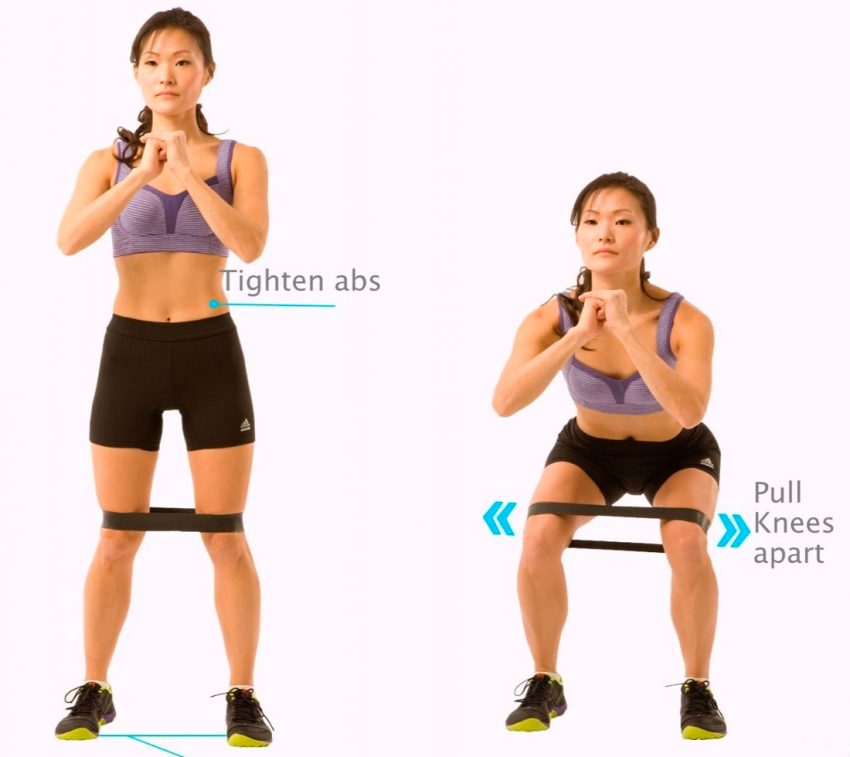
The exercise can be performed with a shock absorber above the knee or below the knee. For problems with starting in the classic squat (the athlete pulls the pelvis back, and does not spread the knees to the sides), use a shock absorber worn around the knees.
The procedure is as follows:
- Slide the shock absorber to the desired height;
- Stand in the starting position for a squat – spread your knees to the sides, feet at the width of the pelvic bones or slightly wider, the weight is evenly distributed between the heel and toe;
- The socks should be directed moderately to the sides, exactly the width that gives a stable position of the feet, and does not interfere with working with the knees;
- The shoulder blades are collected to the spine, the stomach is pulled in. Hands can be crossed in front of the chest or left along the body. Placing the hands in front of the head helps control the back, keeping it upright. But at the same time, it complicates the exercise;
- The knees move to the sides and bend at the same time;
- Further, the hip joint is bent, the pelvis drops below the plane of the knees;
- Downward movement – while inhaling;
- As soon as the optimum depth is reached, an inhalation is taken, then – the feet are pressed on the floor, and first the hip joints are extended, then the knee joints;
- The exercise can be performed both in full amplitude and along a shortened trajectory when the knees are not fully extended at the top point.
Inclusion in the training plan

- If the athlete does not squat with a barbell, you can squat with an elastic band around the hips 1 to 3 times a week, since it does not create additional stress on the joints and spine;
- When strength training dominates, it is necessary to perform the exercise exclusively in the warm-up or auxiliary mode. In the case of a warm-up, you need to do 1-2 sets of 10-20 repetitions at the beginning of the workout, but if an emphasis is required on breeding the knees in a squat, 3-4 approaches are done after the main squat with a barbell;
- The exercise can be done with additional weights on the back or chest, the second option is chosen by those who have a problem with vertical support of the back;
- The technique should be monitored no less, if not more, than in the “classic” squat. A popular mistake is to stretch your buttocks back and not use them in any way when graying and standing up. The high chair squat is a very popular thing among those who have learned to perform the movement in group sessions. But it is not optimal for working out the buttocks and hips;
- The exercise can be alternated with walking side lunges with rubber and back lunges.

